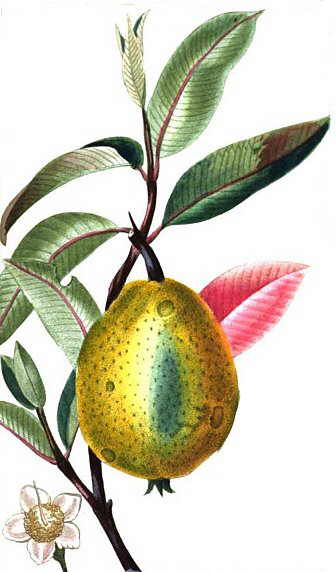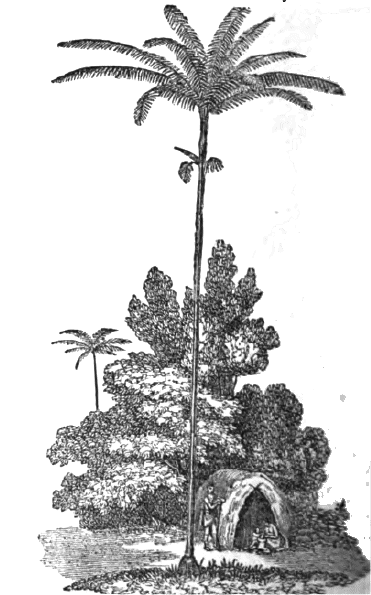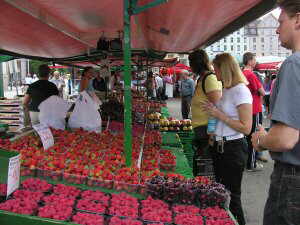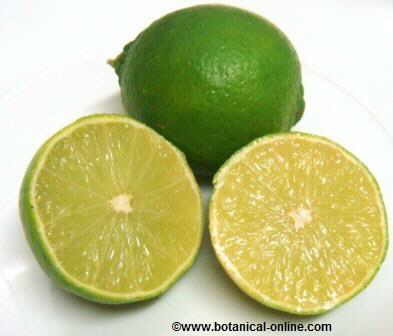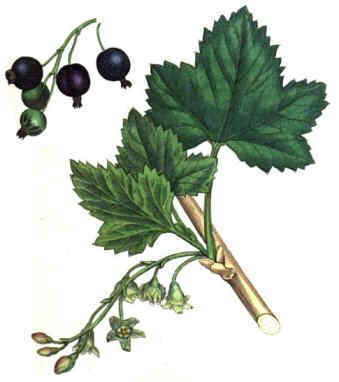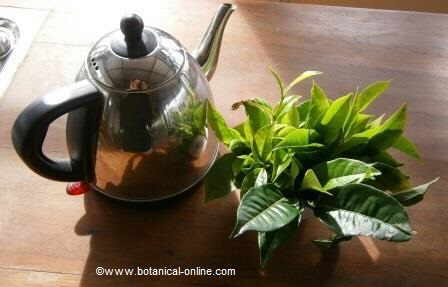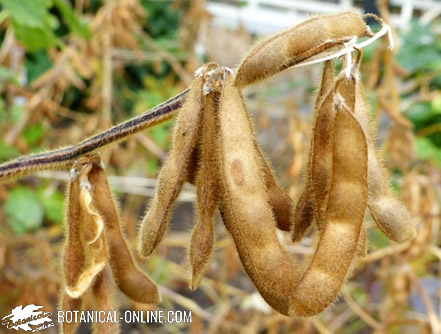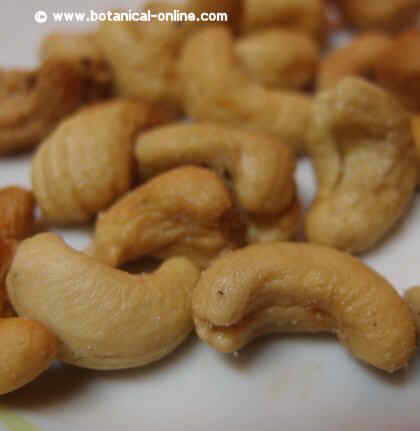Contents
How to grow an elder?
What is an elder tree like?
An elder or elderberry (Sambucus nigra) is a shrub or small tree up to 10 m. It can be a wild plant that is found in forests, river banks or streams and wet hedges.
Woody trunks of grayish brown, and with a suberous appearance.
Composite, pinnate leaves up to 12 cm. From 5 to 7 ovate and serrated leaflets.
Flowers grouped corymbs inflorescences, very flattened up to 20 cm in diameter. Cream colored corolla of about 5 mm. 5 petals. It blooms in late summer
Uses of elder
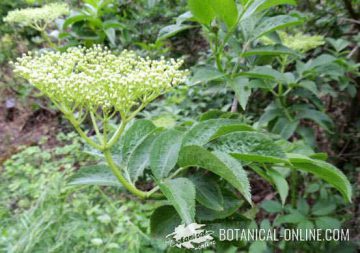
- It is used as a garden tree, either as a single tree or as a shrub to edge your harden. Planted as a single tree, it provides a lot of shade in summer season. It can also be planted under taller trees, such as pines or hollies. When used to limit your garden, it is a good idea to mix it with other berry-producing shrubs, such as currants.
- As a windbreak
- To provide food for butterflies and bees
- To produce edible berries: Harvesting can take place in the second year after planting it. Fruits have to be collected when completely ripe, that is to say, which generally takes place from august to september. (* More information on edible properties of elder berries)
- As a medicinal plant, elder flowers have been used to treat different diseases. Also, leaves and bark were used in the past, but recent studies have proved they are too toxic, so their use is no longer advised.
Elder location
Sun and semi-shade, although to have a good flowering it prefers full sun.
Elder reproduction
Elder can be reproduced through cuttings: To do this, simply cut a branch and introduce it into the soil that should be well watered and added with manure or compost before planting.
It can also be propagated by sprouts or seeds: In case of planting by seeds, do it in summer and germination will occur in the next spring. Seeding must be done manually, by introducing them shallowly into the ground , by means of pressing them lightly.
Elder type of soil and fertilizer
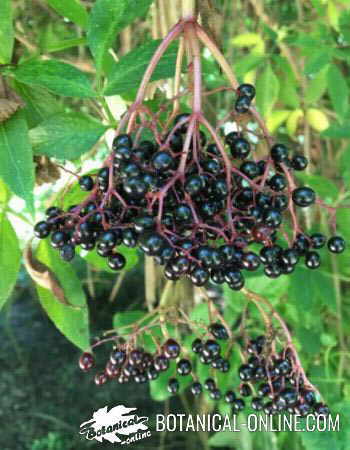
- Elder tolerates most soils although it prefer soils rich in organic matter, with a good drainage
- Ph from 5.5 to 6.5
- Depending of elder growing, elder should be or should not be fertilized. One should consider if the tree has developed to much foliage, in which case no fertilizer should be added. If a normal grow is detected, elder should be fertilized with a rich-nitrogen fertilizer at the begging of spring. Fertilization will foster flower and fruit production
Elder watering
Being a plant that, in its natural state, grows alongside water currents, it requires a very abundant and continuous irrigation, except when rainfall provides enough irrigation.
Water abundantly and protect moisture by covering the soil with peat in very dry seasons.
Elder maintenance
Do not prune during the first two years.
After the first two growing years, elder will benefit from pruning, which prevents the plant from gaining an ungainly appearance. They can be pruned in early spring in the form of an umbrella to get a good shade in the garden.
Pruning requires to remove all the old, sick, dead or broken material. This will permit a better ventilation and will favor new more fruit-producing tender growth
If the weather is very cold, it is better to prune it well into the winter.
Elder diseases
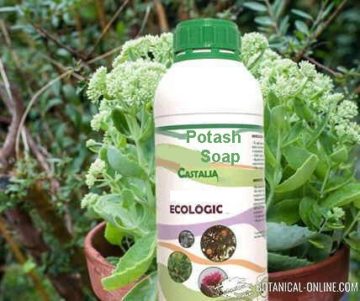
Elder is a quite resistant plant against plagues and diseases, although some viruses and fungi can affect it. Among the main plagues that affect it we can point out:
- Tomato Ringspot Virus: It is a virus disease that affects many plants. (tomatoes, cucumbers, soybean, strawberries, peaches, grapes, etc) producing round or square spots in the plants it attacks. The virus is propagated by the American dagger nematode (Xiphinema americanum) and by infected seed. Once the plague has invaded the plants is very difficult to solve it, so the best way to prevent it is to get rid of the propaging vector or avoid planting this tree in places where this nematode exists.
- Powdery mildew: This fungus affects mainly to the leaves, causing them to roll and fall. The best way to prevent it is to removed the infected material and avoid wetting the tree, watering directly on the soil. When the first signals of the disease appear, it is advised to spray the plant with a fungicide.
- Canker: Caused by fungi of genus Diaporthe, Botryosphaeria and Nectria. They can cause deep holes in the branches or trunk and affect the leaves, making them to fall. The infection is more likely to appear when the plants are weakened because of drought, injuries or other traumatic reasons. The treatment of this disease consists on removing the affected part of the tree or even cutting all the tree in case of it has affected the whole plant.
- Leaf yellowing: This is quite a frequent problem for elder. Brown or black spots appear on the underside of the leaves. It can affect the fruits with the appearance of cracks or spots. There are several reasons that can produce it:
- Iron deficiency (Lack of this nutrient in the soil) If an iron deficiency is proved through a soil analysis, provide the suitable iron amends.
- Leaf spot (brown spots on leaves caused by fungi)
- Verticillium wilt ( Fungus disease cause by fungi that live in the soil). When fungi reasons are detected, the infected leaves have to be removed and destroyed. The best advice is to grow plants resistant to this disease.
Elder plagues
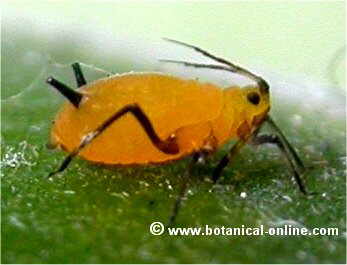
Among the main plagues, elder is mainly affected by:
- Aphids: Small insects that suck the sap of the infected plants. They propitiate the appearance of numerous fungi (sooty moulds) that feed on the secretions of these insects (honewdew). The control of this plague can be achieved by means of different resources, such as daily jet watering of the affected leaves, insecticidad soap solution or biological control ( fungi or insects that attack aphids, such as Beauveria bassiana, ladybugs or woodwasps)
- Thrips (very small insects whose larvae feed on the plants)
- Cane borers (Beetles whose larvae feed on the canes of the affected plants) They produce hollow tunnels in the branches. The infected stems should be removed
Other species of Sambucus
There are about 20 species of this genus worldwide. Among these we would have the following:
Sambucus canadensis
Sambucus mexicana
Sambucus glauca
Sambucus cerulea
Sambucus racemosa
Sambucus ebulus
Sambucus africana
Sambucus pubens
Sambucus gaudichaudiana
Sambucus peruviana
Sambucus javanica
![]() More information on elder
More information on elder

